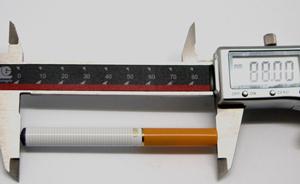According to a new report, teen use of electronic cigarettes more than doubled across the nation from 2011-12. Talbot Partnership for Alcohol and Other Drug Abuse Prevention advises that E-cigarettes look like regular cigarettes, but instead deliver nicotine through a battery-powered aerosol mist that eliminates all smoke.
Among youths in grades 6 through 12 that were surveyed by the Centers for Disease Control, 6.8 percent acknowledged at least trying an e-cigarette in 2012, an increase from 3.3 percent in 2011. Current use in those surveyed doubled from 1.1 percent to 2.1 percent. Students that smoked regular and electronic cigarettes rose from 0.8 percent to 1.6 percent.
The increased use of e-cigarettes by teens is deeply troubling,” said CDC Director Tom Frieden, M.D., M.P.H. “Nicotine is a highly addictive drug. Many teens who start with e-cigarettes may be condemned to struggling with a lifelong addiction to nicotine and conventional cigarettes.”
“About 90 percent of all smokers begin smoking as teenagers,” said Tim McAfee, director of CDC’s Office on Smoking and Health. “We must keep our youth from experimenting or using any tobacco product.”
Although some e-cigarettes have been marketed as smoking cessation aids, there is no conclusive scientific evidence that e-cigarettes promote successful long-term quitting. However, there are proven cessation strategies and treatments, including counseling and FDA-approved cessation medications.
Cigarette smoking remains the leading preventable cause of disease, disability, and death in the United States, responsible for an estimated 443,000 deaths each year. And for every one death, there are 20 people living with a smoking-related disease.
For further information on the dangers of alcohol, tobacco, and other drugs, contact Talbot Partnership at410-819-8067. Please also visit our website at www.talbotpartnership.org or find us on Facebook.



Write a Letter to the Editor on this Article
We encourage readers to offer their point of view on this article by submitting the following form. Editing is sometimes necessary and is done at the discretion of the editorial staff.